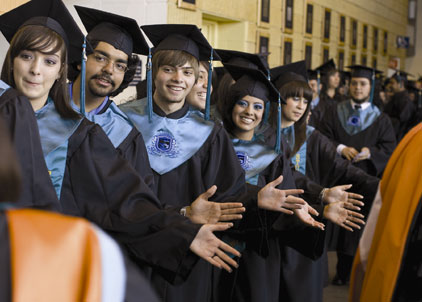Is it accurate to say that it is the ideal time for the understudy to offer the instructor a couple of lessons?
Twenty-five years prior, Americans like economist Jeffrey Sachs were circling Poland serving to transform hopeless communism into a lively market economy. Presently, with the U.s. attempting to alter its slacking instructive framework, it may very well take in a thing or two from Poland, which in the previous decade has advanced forcefully from the back of the global pack and beats the U.s. on most execution measures. Also it didn’t even use a great deal cash to get there.
Poland now has the fourth-most elevated number of advanced education understudies in Europe, behind the U.k., Germany and France. Perusing, once a snag, turned into a benefit — more so than in the U.s., the U.k., Germany or France. What’s more nineteenth place in math on an overview by the Organization for Economic Cooperation and Development (OECD) has helped it create some of Europe’s brightest ability in the engineering field. The U.s. positioned an “underneath normal” 27th.
“Our educational module is for the most part focused around the impacts of instruction — what understudies know as well as what they can do, and how they can utilize their insight essentially,” Ewa Dudek, Poland’s undersecretary of state for training, tells OZY. Dudek accepts Poland’s prosperity originates from permitting understudies more extension for criticism on their instruction.
Obviously, its a great deal more than that.
It was 1998, practically 10 years after the fall of socialism, and the nation was flying in the fallout of Sachs’ business changes. Deregulation and privatization made Poland’s economy one of Europe’s quickest developing.
Be that as it may its schools falled a long ways behind and kept on depending on course materials scarcely changed since the Stalinist 1950s. Children osmosed philosophy and professional preparing, prepping them for vocations in substantial industry that had generally vanished.

Pioneers in the capital, Warsaw, saw a developing era of underserved and uninspired understudies as a financial bear trap. Without intense changes, the nation could kiss its decade of flourishing farewell.
“We need to move the whole framework — push it out of its harmony,” urged then-Education Minister Mirosław Handke.
Handke got his green light. With momentous pace, in a year the scholarly world in Poland was unrecognizable. The demagoguery was discarded and in came another manifestation of general instruction that opposed specialization. Simply a year after that, in 2000, Poland started to jump up the universal alliance tables.
By 2012, the last time the OECD directed its study, Poland was one of the best showing nations on earth.
Actually its the stand out to have gone from beneath normal in the outline, which now measures 510,000 15-year-olds in 65 domains, to above — with a GDP positioning simply 46th internationally. On key markers — math, science, perusing — it dug out from a deficit to rank well in front of the United States.
How did Poland isn’t that right?
In 1998, Handke, a previous science instructor, was gazing at a shocking equation. Shine kids went to elementary school for eight prior years being piped into professional preparing at age 14.
Under the redid framework, grade school keeps going six years, emulated by three years of another complete lower optional school, before a choice is made on whether to send an understudy to professional preparing. Learning — perusing, composition, ‘rithmetic — is esteemed above specialized expertise. Remote dialect — particularly English — turned into a key segment. In 2000 just 1 percent of children got four hours or a greater amount of dialect classes. By 2006 that figure was 76 percent.
Be that as it may its not about cash. Poland uses around $5,000 for every understudy yearly from essential through tertiary instruction, however beats the United States, which uses around three times that sum.
Poland has its communist past to thank for the quick advancement, says Izabel Olchonowicz, an instruction advisor: “Individuals were extremely energetic to modernize; they were holding up such quite a while,” she says. “At this time is the consequence of that.”
The economy has kept on being solid. At the point when Europe’s economies were tumbling in 2009, Poland was its just island of development, getting a 1.6 percent lift. Poland is far superior off than when Handke had his say.
Instructors may oppose this idea. Poland remains a low payer — around $650 a month for instructors contrasted and the national normal for all laborers of $945. Slawomir Broniarz, the nation’s most senior educators unionist, cautions that low pay may put Poland’s trajectory in uncertainty, fundamentally in view of slipping principles of preparing. “We’ve approached ordinarily for the change of educator preparing, in light of the fact that they are bad enough for these times. We require new state of mind, projects and better arrangements for future difficulties.”
“Educating is extremely requesting,” says Olchonowicz, “and I believe that what they get for it is insufficient. It is not propelling, and if Poland needs to development its training framework, the pay rates of educators need to accompany it.”
Poland’s fast improvement of remote dialect preparing may additionally have a negative reaction. Numerous Poles are leaving home to increase abilities abroad. While that helps the engineering division in the event that they return, numerous don’t.
Anyhow in spite of the splits, Poland’s instructive framework is a sample to most different nations, and evidence that its not simply cash that makes good students.



